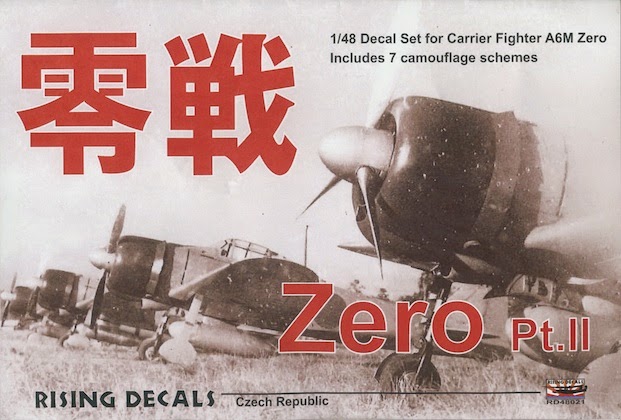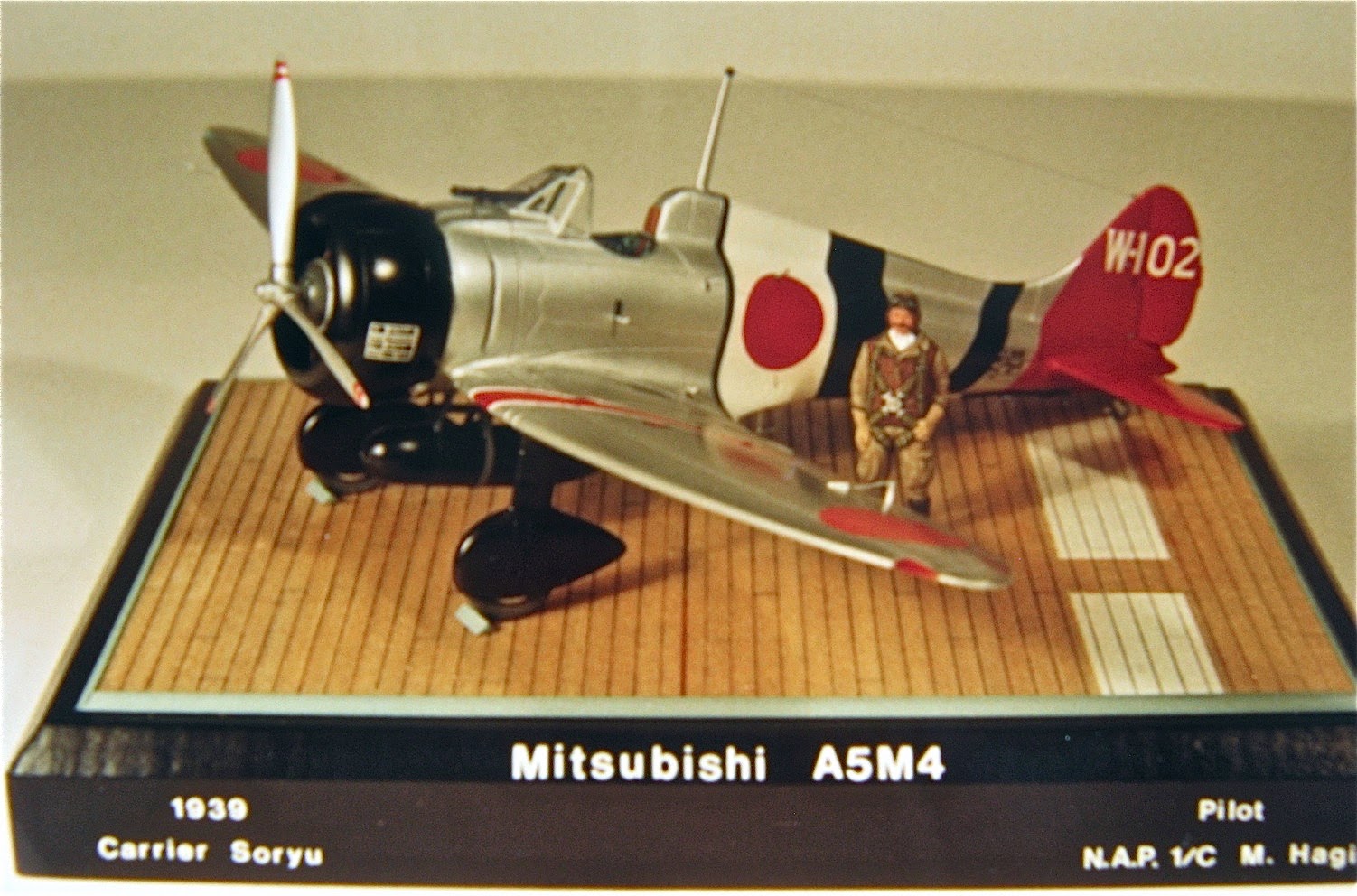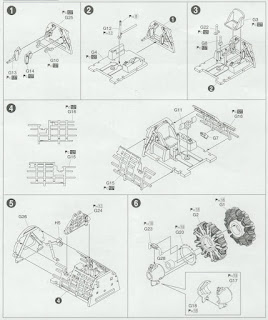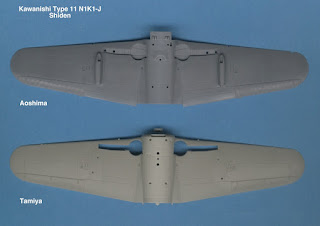An interesting collection of releases from the prolific Rising Decals recently. First up is set RD48020, a sheet of 1/48th scale markings for two foreign service subjects. Firstly an ex-582nd Kokutai A6M3 Model 22, painted white with green surrender crosses and the partially visible original unit code 2-152 as flown briefly by the RNZAF and now surviving at the Auckland War Memorial Museum in New Zealand. Secondly an A6M2-N 'Rufe' float fighter evaluated by ATAIU-SEA (Allied Technical Air Intelligence Unit - South-East Asia) and flown briefly and fatally in Indo-China by the French in September 1946.
Captured Japanese aircraft subjects seem to be perennial favourites with modellers and both these will present engaging finishing and weathering challenges in order to produce unusual models.
The next 1/48th scale set is RD48021 Zero Pt II offering a second set of decals for seven examples of the ever-popular Mitsubishi A6M.
- A6M2 Model 21 of 331st Ku at Balikpapan, Borneo in October 1944 with the tail code 31-130. This aircraft in standard deep green black over grey scheme except for grey painted tail fin and wing tips applied for air defence recognition purposes.
- A6M2 Model 32 of Tainan Ku at Buna, New Guinea in August 1942. In standard early factory scheme with tail code V-177, blue fuselage band with unusual red fin and rudder tip.
- A6M2 Model 21 of Konoike Ku at Konoike, Japan during 1944. This aircraft carries the tail code コウ-176 (KoU-176) and appears to be in a camouflage scheme of dark green mottle over the original standard early factory finish.
- A6M2 Model 21 of Kanoya Ku at Rabaul, New Britain in November 1942. In standard early factory finish with tail code K-108, presentation legend on fuselage and diagonal red tail band.
- A6M2 Model 21 of 22nd Ku in Indo-China during the offensive into Malaya in the winter of 1941-42. In standard early factory finish with tail code II-131, red fuselage and tail bands with six 'bird' victory markings applied to the fuselage. The aircraft number '131' is speculative as the tail is out of view in the reference photograph.
- A6M3 Model 22 of the 331st Ku at Magwe, Burma in December 1943. In deep green black over grey with tail code 31-161. This aircraft has the grey painted tail fin and starboard wing tip used as recognition markings during a joint IJAAF and IJNAF raid against Calcutta but sources differ as to whether just one or both wing tips were painted for the operation.
- A6M2 Model 21 of Atsugi Ku at Atsugi, Japan in the Spring of 1943. This aircraft carries the tail code R3-116 on an overpainted band and the appearance suggests that it is an ex-carriet aircraft. The tatty looking scheme appears to be either a very heavily weathered deep green black over grey or the standard early factory scheme worn down to reveal the red oxide primer coat.
This set provides for some of the more unusual Zero schemes in a popular scale but provides plain and bordered Hinomaru for only one aircraft.
In 1/72nd scale set RD72068 presents markings for two unusual Nakajima Ki-84 Hayate:-
Two most interesting Ki-84 subjects for the Sword and/or Hasegawa kits, although Lt Yamana's Hayate already features as a subject on the Lifelike Decals sheet for Hayate Pt.2 72-027.
Finally and also to 1/72nd scale, no less than five resin/vacform accessory and decal sets for the Tachikawa Ki-9 trainer (RS Models) featuring blind flying hoods, different undercarriage configurations and markings for different flying schools.
RD Acr-010 (above) includes alternative markings for the Utsonomiya Army Flying School and Army Air Academy together with a resin blind flying hood of the soft top type.
RD Acr-011 has civil registration markings for J-AJTI of the Matsudo Local Advanced Pilot Training Centre at the Ministry of Communications Air Crew Training School together with the resin soft top blind flying hood.
RD Acr-012 has markings for a Ki-9 of the Kumagaya Army Flying School with a vacform solid type blind flying hood. Alternative red or black flying school insignia are included. This aircraft also has an unusual white star marking on the cowling.
RD Acr-013 has resin parts to represent the early undercarriage style with spats and the markings of a trainer at an unidentified Civil Flying School with the fuselage number 2032.
RD Acr-014 combines the early resin undercarriage and vacform solid type blind flying hood with markings for a trainer at an unidentified Army Flying School with aikoku presentation markings for # 133. All these sets offer plenty of alternative and colourful options for finishing the very nice RS Models Ki-9 kit.
With thanks to Mirek of Rising Decals for kindly providing all the review samples detailed above.
Image credits: All © 2015 Rising Decals
- Ki-84 Hayate from first batch of prototypes in the probable markings of the Rikugun Kokugijutsu (Army Flying Test Centre) at Fussa (Yokota), Japan in August 1945. This aircraft appears to be in a heavily weathered depot-applied scheme of dark green over natural metal with Homeland Defence 'bandages'.
- Ki-84 Hayate of the 2nd Yuso Hikotai, Rikugun Koku Yuso (Army Air Ferry Command) as flown by Lt Shuho Yamana on a reinforcement ferry flight from Ota, Japan to Saigon, Indo-China during 1944. This aircraft sports an unusual for type 'giraffe-pattern' depot scheme of dark green over natural metal and the personal marking of a white tiger painted on the tail fin. More on this scheme in the final part of the blog series Hayate Thoughts - to come.
Finally and also to 1/72nd scale, no less than five resin/vacform accessory and decal sets for the Tachikawa Ki-9 trainer (RS Models) featuring blind flying hoods, different undercarriage configurations and markings for different flying schools.
RD Acr-010 (above) includes alternative markings for the Utsonomiya Army Flying School and Army Air Academy together with a resin blind flying hood of the soft top type.
RD Acr-011 has civil registration markings for J-AJTI of the Matsudo Local Advanced Pilot Training Centre at the Ministry of Communications Air Crew Training School together with the resin soft top blind flying hood.
RD Acr-012 has markings for a Ki-9 of the Kumagaya Army Flying School with a vacform solid type blind flying hood. Alternative red or black flying school insignia are included. This aircraft also has an unusual white star marking on the cowling.
RD Acr-013 has resin parts to represent the early undercarriage style with spats and the markings of a trainer at an unidentified Civil Flying School with the fuselage number 2032.
RD Acr-014 combines the early resin undercarriage and vacform solid type blind flying hood with markings for a trainer at an unidentified Army Flying School with aikoku presentation markings for # 133. All these sets offer plenty of alternative and colourful options for finishing the very nice RS Models Ki-9 kit.
With thanks to Mirek of Rising Decals for kindly providing all the review samples detailed above.
Image credits: All © 2015 Rising Decals










































































































































